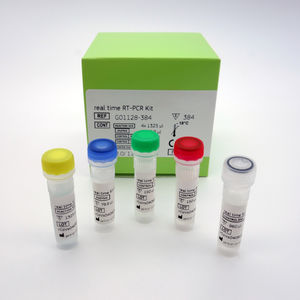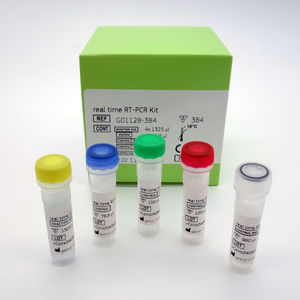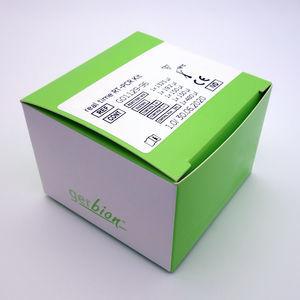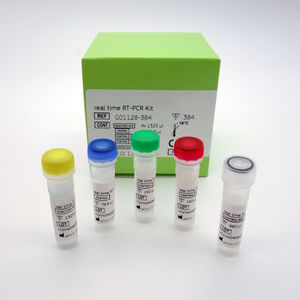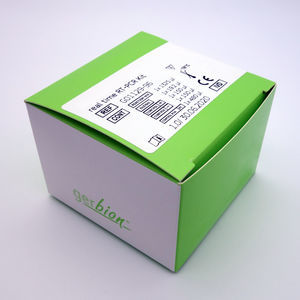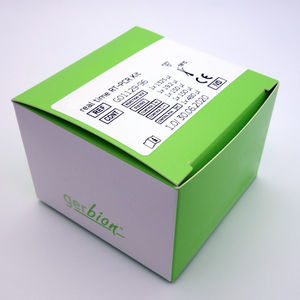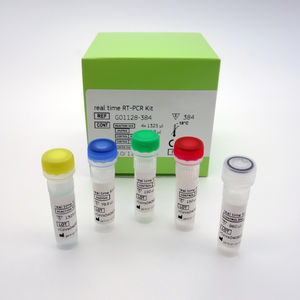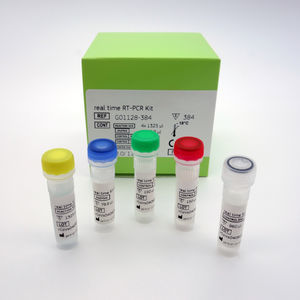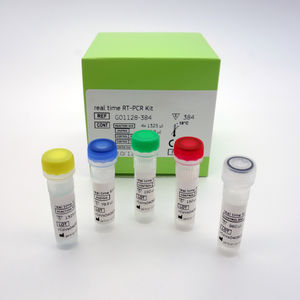
- Laboratory
- Laboratory medicine
- Solution reagent
- LINEAR CHEMICALS
Solution reagent kit diarella Q-Feverdiagnosticfor RT-PCRliquid
Add to favorites
Compare this product
Characteristics
- Type
- solution
- Applications
- diagnostic, for RT-PCR
- Format
- liquid
- Tested parameter
- for genes
- Micro-organism
- bacteria
- Storage temperature
Max.: 2 °C
(36 °F)-18 °C
(-0 °F)Min.: -8 °C
(18 °F)
Description
diarella Q-Fever is a real-time PCR assay for the detection of Coxiella burnetii DNA, extracted from clinical specimens and ticks.
2 Pathogen Information
The pathogen Coxiella burnetii (Q-Fever) is a zoonotic, gramnegative bacterium and belongs to the family Rickettsiaceae. It is the causative agent of Q-Fever, an acute rickettsial disease.
It can be considered the most infectious disease in the world, as a human being can be infected by a single bacterium. It can be found worldwide, including tropical countries, with the exception of New Zealand. In Europe it appears as hepatitis rather than pneumonia as in the United States.
The most common manifestation is flu-like symptoms. The fever lasts approximately 7 to 14 days. The disease can progress to an atypical pneumonia, which can result in a life threatening acute respiratory distress syndrome (ARDS). Occasionally, Q-Fever causes hepatitis, which may be asymptomatic or becomes symptomatic with malaise, fever, liver enlargement and pain in the right upper quadrant of the abdomen.
The chronic form of Q-Fever is very similar to inflammation of the inner lining of the heart, which can occur months or decades following the infection. It is fatal if left untreated, however with the correct treatment the mortality rate falls under 10 %.
3 Principle of the Test
The diarella Q-Fever real time PCR Kit contains specific primers and duallabeled probes for the amplification and detection of Coxiella burnetii DNA, extracted from clinical specimens and ticks. The presence of nucleic acid is detected by an increase in fluorescence due to hydrolysis of the probes during amplification.
Catalogs
No catalogs are available for this product.
See all of LINEAR CHEMICALS‘s catalogsRelated Searches
- Assay kit
- LiNEAR solution reagent
- Blood assay kit
- LiNEAR molecular biology reagent
- Immunoassay assay kit
- Plasma assay kit
- Infectious disease detection kit
- LiNEAR rapid blood test
- LiNEAR protein reagent
- LiNEAR diagnostic reagent
- LiNEAR laboratory reagent
- Rapid lateral flow test
- Immunoassay rapid diagnostic test
- LiNEAR cassette rapid test
- LiNEAR rapid virus test
- LiNEAR rapid serum test
- LiNEAR rapid plasma test
- Histology reagent kit
- LiNEAR medium reagent
- LiNEAR rapid infectious disease test
*Prices are pre-tax. They exclude delivery charges and customs duties and do not include additional charges for installation or activation options. Prices are indicative only and may vary by country, with changes to the cost of raw materials and exchange rates.












